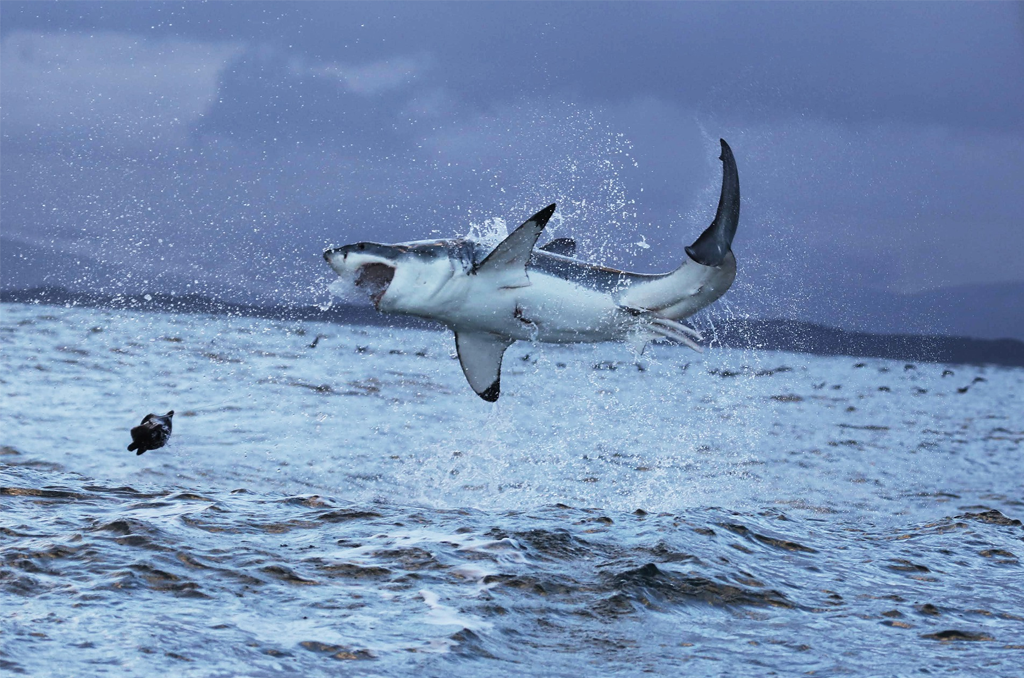Courtesy: Image by mlproject from Pixabay
Early Thursday morning, researchers observed a “ping” from a massive great white shark just off the coast of Florida, south of Miami.
The 15 foot, 2,000 plus pound female great white was “pinged” at 5:46 a.m. near Key Largo Thursday. The shark, Unama’ki, is the second-largest great white shark OCEARCH has tagged in the northwest Atlantic and one of the largest ever tagged.
Since 2007, OCEARCH, a non-profit research organization specializing in shark tagging, has tagged 416 animals on 39 expeditions.
In its most recent expedition, OCEARCH tagged Unama’ki off the coast of the Canadian province of Nova Scotia two months ago. The research group first tagged the shark in September of last year in the same region.
Unama’ki means “land of the fog” in the language of the indigenous Mi’kmaq people of Nova Scotia. The name comes from the area where the shark was tagged near Cape Breton.
The path the shark has taken over the past few months along the eastern seaboard could provide insights into feeding, mating, and migration patterns.
According to the shark’s tracker, she has traveled up and down the North Atlantic Ocean waters between Nova Scotia and southern Florida and covered a loop between Bermuda and Vero Beach.
For years, great white migration patterns have puzzled scientists, and OCEARCH is a leading force in the research and study of these creatures.
About OCEARCH
OCEARCH conducts research expeditions aboard the M/V OCEARCH, which serves as an at-sea laboratory. The M/V OCEARCH contains a 75,000 lb. capacity hydraulic platform designed to safely lift marine animals out of the ocean for access by a multi-disciplined research team.
Animals are caught from tenders, using handlines, and are guided by hand in the water on and off the lift. The animals are then brought to the submerged platform of the M/V OCEARCH vessel and the platform is raised. Once the animals are restrained and hoses of water have been set to enable a continuous flow of fresh seawater over the gills, the science team, made up of researchers and veterinarians, begins its process. Tags such as SPOT, acoustic, and accelerometer are attached, morphometrics are recorded, and samples, such as blood and tissue, are collected.
OCEARCH has carefully crafted its procedures to minimize stress and risk to the sharks during research expeditions. From the capture to the release, the tagging, handling, and sampling procedures follow established protocols by Institutional Animal Care and Use Committees (IACUC) of participating institutions.
The efficiency of this collaborative method greatly speeds up the process of researchers being able to publish their work. Studies published in academic journals are essential to guiding responsible ocean management policies. OCEARCH has been cited in 55 published studies so far with many more on the way.
To learn more about the organization and follow along with Unama’ki, click here.
Are you interested in Florida’s nature? For stories like this and much more: Florida Insider is dedicated to educating, entertaining, and informing its readers about everything Florida. Easy to read content at the palm of your hands and covering the stories that matter.
Chris began his writing as a hobby while attending Florida Southern College in Lakeland, Florida. Today he and his wife live in the Orlando area with their three children and dog.

